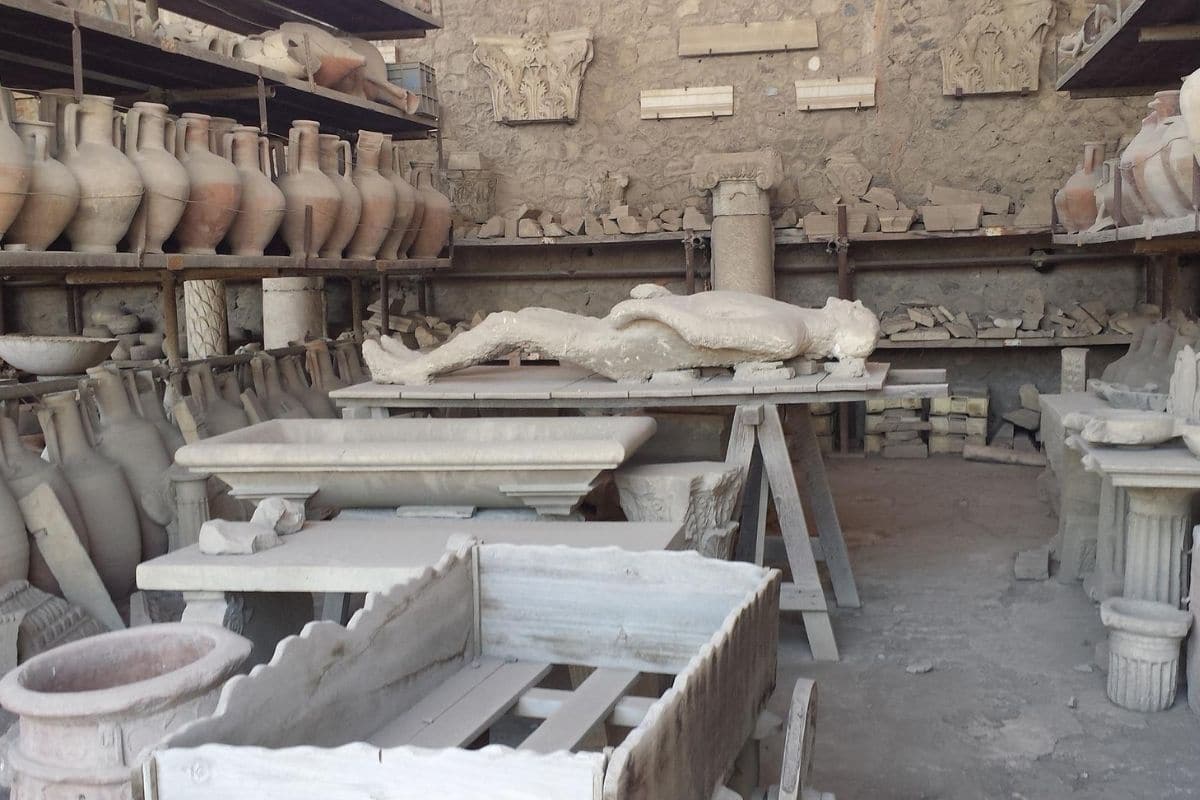
Not only was he faced with a violent volcanic eruption; he may have also suffered from tuberculosis.
Two millennia ago, something merciless happened in modern-day Italy. The world-famous Roman city of Pompeii and nearby Herculaneum were swept away by an explosive eruption of Mount Vesuvius and buried under a thick cloud of ash. The eruption caused many casualties. But thanks to the perfect condition in which many of these unfortunate deaths have survived, we are learning more and more about the people of Pompeii and now, thanks to a new studyeven access to their personal health record.
Vesuvius erupted in AD 79. The cities of Pompeii and Herculaneum near the volcano were buried under a thick layer of ash and lava. Thousands of people died and were covered with a thick layer of ash and lava—perhaps before they even realized what was going on. The tragic event still appeals to the imagination to this day. Not least because the thick layer of ash and lava has ensured that everything underneath is almost perfectly preserved. Buildings and scenes uncovered during excavations give the impression that time has stood still here. And in a way it is; everything is still as it was on that one fateful day in the year 79. Researchers have often wondered about well-preserved human remains, frescoes and food that often still stood on the table. To this day, many interesting finds are still being made in both cities, which give us a unique insight into how the Romans lived, worked and lived at that time. It is the unique story of a brutal eruption that destroyed thousands of lives, but at the same time ensured that people and their environment were immortalized.
Researchers have succeeded in sequencing the genome of a Pompeii resident for the first time in a new study. The person died in Pompeii after the eruption of Mount Vesuvius in AD 79. It’s a big milestone. For previously, only short stretches of mitochondrial DNA from Pompeiiian human and animal remains had been sequenced.
Two persons
The study examined the remains of two individuals found in the so-called “House of the Craftsman” Pompeii. Then the researchers managed to extract their DNA. The team suspects that one unearthed body belonged to a man who was between 35 and 40 years old when he died. The other remains probably belonged to a woman who was already in her 50s. Although the researchers were able to extract ancient DNA from both individuals, they only managed to sequence the man’s entire genome.
tubercolosis
With the sequenced genome at hand, the researchers were able to decipher interesting information about the health of this resident of Pompeii. Thus, additional analyzes of the skeleton and DNA reveal that this man had double bad luck. Not only was he the victim of a violent volcanic eruption, he may also have suffered from tuberculosis. The researchers came across traces that indicate contamination with mycobacterium† the group of bacteria to which the tuberculosis-causing bacteria Mycobacterium tuberculosis belongs. This suggests that this unfortunate man suffered from this debilitating infectious disease before his death.
To compare
That the entire genome of this resident of Pompeii has now been mapped is very interesting. Because now scientists can compare his genome with that of others. And that’s exactly what the team has done. For example, they compared the genome of 1030 ancient and 471 modern Western Eurasian people and looked for similarities and differences.
Similarities and differences
The researchers found that the Pompeii resident’s genome — unsurprisingly — closely resembles that of other individuals who lived in Italy during the Roman Imperial period. The genome also shows many similarities with that of contemporary Italians from central Italy. However, the researchers also found groups of genes found in people native to the island of Sardinia, but not in other individuals who lived in Italy during the Roman Imperial era. This suggests that there must have been a high degree of genetic diversity in the Apennine Peninsula during this period.
Pyroclastic material
All in all, thanks to the genome of the Pompeii resident, we get an interesting insight into his ancestry and health record. And that thanks to the thick layer of ash and lava that ensured that everything underneath is almost perfectly preserved. The researchers suspect that without the pyroclastic material released during the eruption of Vesuvius, successfully repairing ancient DNA would have been particularly difficult. This glow cloud, made up of waves of solid or semi-liquid lava, gas, rocks and ash, likely protected against DNA-degrading environmental factors, such as oxygen in the air.
The findings therefore show that it is possible to extract and analyze ancient DNA from human remains from Pompeii. And that provides new insight into the genetic histories and lives of these people who were victims of perhaps the most famous volcanic eruption ever.
Source material:
†Archeology: First Pompeiian human genome sequenced— Scientific Reports (via EurekAlert)
Image at the top of this article: Pascvii via Pixabay